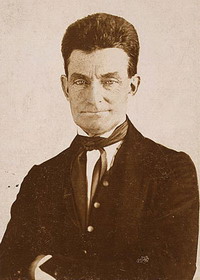Unknown bidder acquires rare daguerreotype of abolitionist John Brown
An unidentified bidder bought a rare daguerreotype of abolitionist John Brown for $97,750 (66,728 EUR).

The buyer, who bid by telephone, declined to be identified or to talk about the purchase, auctioneer Wes Cowan said.
Cowan, an occasional appraiser on the PBS television show "Antiques Roadshow" and host of the public television series "History Detectives," had estimated a sale price of $60,000 to $80,000 (40,958 to 54,611 EUR).
"It's the most important photograph we've handled in our 13 years of existence," he said.
Experts say probably no more than a half dozen original daguerreotypes exist of the man best known for his 1859 raid on a federal arsenal in Harpers Ferry, Virginia.
A daguerreotype is an early form of photography popular in the 1840s and 1850s in which an image is formed on a chemically treated metal plate. The method was named for Louis-Jacques-Mande Daguerre, the French painter who developed the process.
The last daguerreotype of Brown that sold at auction went for $115,000 (78,504 EUR) in 1997, Cowan said. It is displayed at the Smithsonian Institution's National Portrait Gallery.
The photo auctioned Friday was in Brown's family for five generations until descendants contacted Cowan, asking him to broker the sale to help them pay medical bills, he said.
Brown was born in 1800 in Connecticut and was a free-state activist in Kansas before the October 1859 raid that he hoped would inspire an anti-slavery rebellion.
He was wounded while being captured, and was later tried and hanged by the state of Virginia for treason two months later.
Although revered by some for his anti-slavery militancy, Abraham Lincoln called him a "misguided fanatic."
Subscribe to Pravda.Ru Telegram channel, Facebook, RSS!


